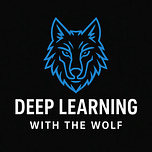Paper Title: “Neural Machine Translation by Jointly Learning to Align and Translate.”
Authors: Bahdanau D., Cho K., Bengio Y.
Link: arXiv:1409.0473 (2014)
The Quick Summary
Early encoder–decoder networks stuffed a whole sentence into one memory blob—great for tweets, terrible for paragraphs. Bahdanau, Cho & Bengio fixed the squeeze by adding a soft spotlight (attention) that lets the decoder peek at the exact source words it needs, token‑by‑token. Translation quality jumped, and the AI world hasn’t stopped paying attention since.
Why It Still Matters (in one easy‑to‑grasp story)
Back in 2014, machine‑translation models were like over‑packed suitcases: they tried to cram an entire source sentence into one fixed‑size memory blob, and things started bursting at the seams the moment you fed them a long paragraph. Bahdanau, Cho, and Bengio solved that by giving the model a built‑in flashlight—attention—so it could shine a light on just the word or phrase it needed right now instead of lugging the whole sentence around. That simple “look‑where‑you‑need‑to” habit didn’t just boost translation scores by about five BLEU points; it became the template for everything from today’s Transformers (the engines behind ChatGPT and Google Bard) to the little heat‑maps your doctor sees when an AI spots a suspicious lump in an X‑ray. Whenever you hear someone say “the model is paying attention,” they’re tipping their hat to this paper—and that’s why it still matters.
How It Works (Plain‑Language Edition)
Bidirectional GRU encoder writes a note for every source word.
At each translation step, a tiny feed‑forward net weighs those notes to ask, “Which words matter right now?”
The decoder reads the weighted summary (context vector) and picks the next target word.
Training tweaks both alignment scores and word predictions end‑to‑end—no external phrase table required.
Think of it like glancing back at the recipe card each time you add an ingredient instead of memorizing the whole thing first.
Wolf Bites — Skimmable Nuggets
Soft vs. hard alignment: no discrete pointer jumps; gradients flow smoothly for back‑prop.
Long‑sentence rescue: attention slashed Seq2Seq’s error spike on 30 +‑word inputs.
The paper’s famous alignment heat‑map of “le” → “the” became NLP’s first meme.
Authors joked attention was “added at the reviewer’s request”—best peer‑review tweak ever.
Real‑World Ripples
Netflix and YouTube rely on attention‑based MT for instant dubbing.
Image captioning: visual‑attention layers borrow the same score‑and‑sum trick.
Robotics: manipulation planners attend to key waypoints instead of the whole sensor stream.
#Attention #NLP #MachineTranslation #DeepLearning #TheWolfReadsAI















Share this post